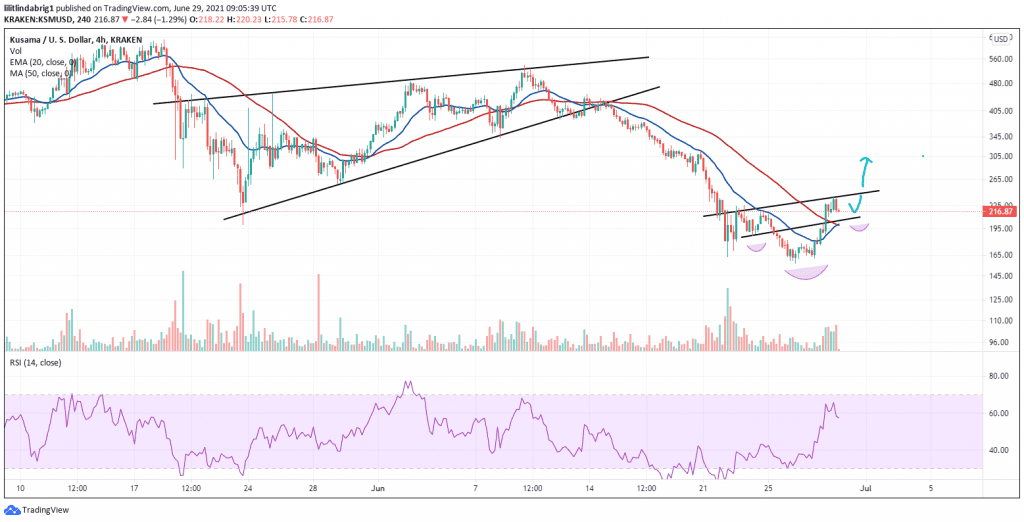- Parachain auctions on the Kusama testnet
- Price analysis of the KSM 4h chart, and the possible bullish rally ahead
- Is it the right time to buy the KSM token?
Yerevan (CoinChapter.com) – Kusama (KSM), aka “Canary Network,” the testnet blockchain network within the Polkadot ecosystem, rallied explosively since Sunday, logging a 45 percent gain. The KSM/USD exchange rate reached 238 before correcting down to 219 in the European session Tuesday. The price surged amid the second parachain auction, launched on the Kusama network.
Parachain Auctions
Kusama is a growing project, and it serves as a testbed for major developments before they can launch on the Polkadot blockchain.
The slot auctions were initiated on the network on June 15, as a “market-efficient way of selecting which parachains will be added to the Kusama Relay-chain and have their functionality become a part of the Kusama network.”, according to Gavin Wood, the founder of Polkadot and the co-founder of Ethereum.
The network announced the first auction results on June 22. Karura, the sister network of Polkadot’s DeFi project Acala, won the auction by raising more than 500,000 KSM coins via Crowdloans. As a part of the loan, the token-trading application’s native KAR tokens will be distributed to contributors at a minimal rate of 12 KAR per 1 KSM. A total of 15,000 users will benefit from the distribution.
The second auction launched on the network on June 22. Kusama hasn’t announced the winner yet, but the Moonriver project seems to be in the lead.
Also read: Polkadot (DOT) and Kusama(KSM) slump after the auction-led rally—what’s next?
Kusama 4h chart
After the fulfilled bearish prediction of the rising wedge formation, Kusama hinted at a bullish pattern on the 4h chart, ahead of the second auction winner announcement. The inverse head and shoulder pattern could mean further gains for the token.
The pattern consists of three consecutive dips in price. The middle dip is lower than the other two and constitutes the ‘head.’ The neckline is the initial margin of the complete pattern. The trendline connecting the highest price points of the inverse head indicates the margin of the possible second shoulder of the formation.
As indicated on the chart below, the price could slip to the indicated margin before retesting it as support and adopting an uptrend. After forming the second shoulder, the price could reach the neckline and follow up with a bullish breakout over the neckline.

The golden cross on the 4h chart also supports the bullish sentiment prediction.
In hindsight, a golden cross occurs when a short-term moving average crosses up above a long-term moving average. For example, on the chart above, the 20-4h exponential moving average (EMA-20: blue wave) crossed above the 50-4h simple moving average (SMA-50: red wave). Thus, the golden cross is a long-term bullish predictor, confluence with the inverse head and shoulders formation.
Also read: KSM crashes over 11% after the first parachain auction goes live on Kusama—what’s cooking?
Is it high time to buy?
According to the four-hour chart, the future sessions look bullish for Kusama for two reasons. First, the inverse head and shoulders pattern hints at a minor setback (second shoulder) before the price rallies. And second, a golden cross is forming between the EMA-20 and the SMA-50.
Also read: Ethereum analyst explains why ETH is set to break higher



